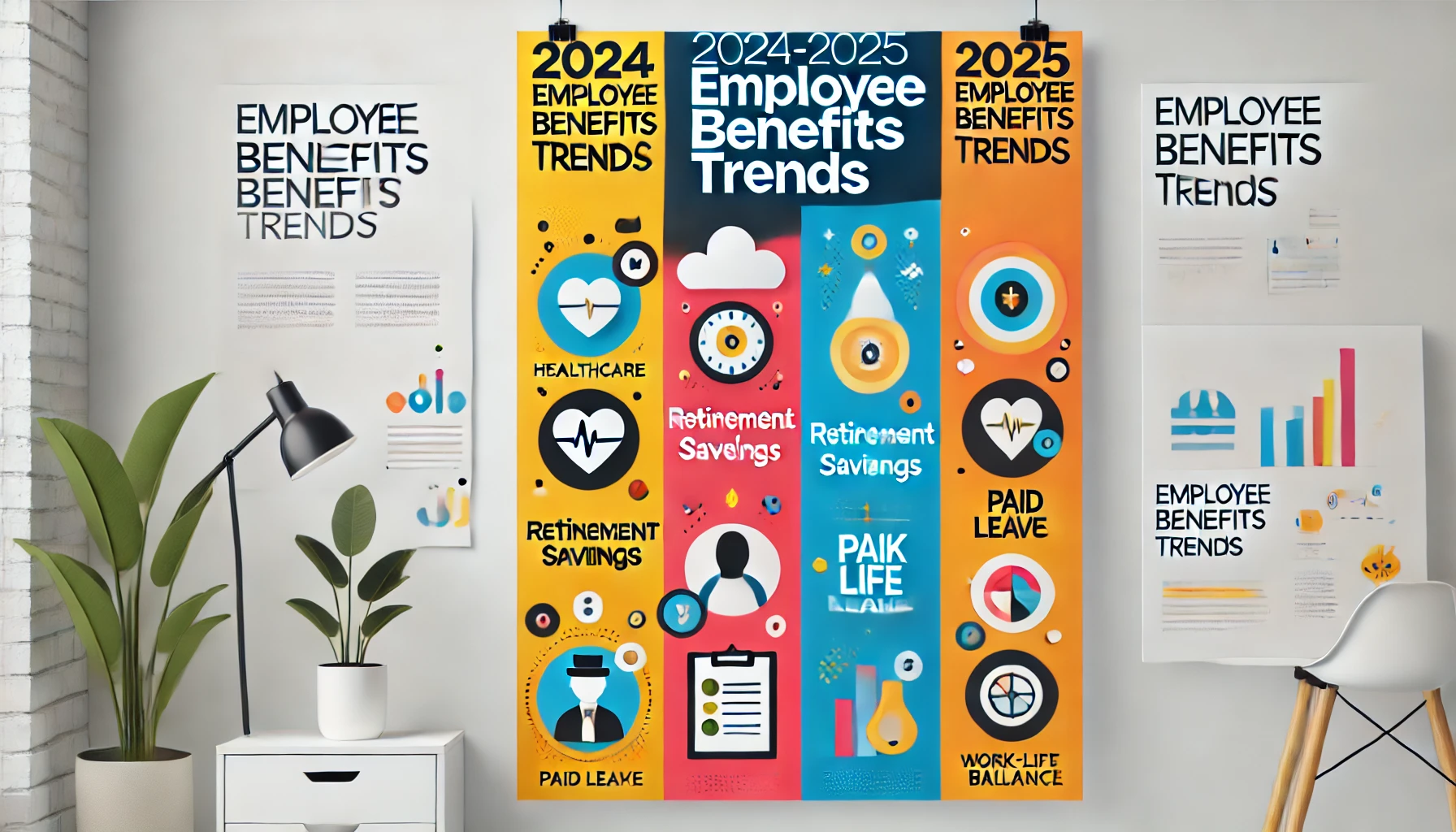
In today’s competitive labor market, employee benefits are more than just a cost of doing business—they’re a strategic tool for attracting, retaining, and engaging top talent. However, with healthcare costs rising, financial wellness gaining priority, and workplace expectations evolving, employers must adapt their benefits strategies to remain competitive while keeping costs under control.
Let’s explore the current landscape of employee benefits costs, emerging trends, and strategies employers can use to maximize ROI on their benefits investments.
The Cost of Employee Benefits in 2024-2025
Total Compensation Breakdown
According to the Bureau of Labor Statistics (BLS), the average employer cost for total compensation (wages + benefits) varies significantly by industry:
| Worker Type | Total Compensation | Wages & Salaries | Benefits Cost | Benefits % of Total |
|---|---|---|---|---|
| All Civilian Workers | $46.84/hr | $32.25/hr (68.9%) | $14.59/hr | 31.1% |
| Private Industry Workers | $44.40/hr | $31.25/hr (70.4%) | $13.15/hr | 29.6% |
| State & Local Gov Workers | $62.92/hr | $38.86/hr (61.8%) | $24.06/hr | 38.2% |
| Nonprofit Organizations (Estimate) | $39.20/hr | $27.80/hr (71%) | $11.40/hr | 29% |
Employee benefits make up nearly one-third of total compensation costs, requiring careful planning and optimization.
Healthcare Benefits: The Most Expensive Piece of the Puzzle
Health insurance remains the most costly benefit for employers.
Average employer-sponsored family health insurance premiums reached $25,572 in 2024—a 7% increase from the previous year. Employers cover about 75% of this cost, leaving employees to pay the remaining $6,296 out of pocket.
Emerging Trend: Small businesses and nonprofits face even higher per-employee costs and are increasingly turning to self-funded health plans, level-funded plans, and reference-based pricing (RBP) to control spending.
Ways Employers Are Controlling Healthcare Costs:
✔ Direct Primary Care (DPC) – Providing employees with concierge-style access to primary care for a flat monthly fee.
✔ Reference-Based Pricing (RBP) – Reducing claims costs by negotiating fair market rates for medical servicesrather than paying traditional insurer rates.
✔ Pharmacy Benefit Management (PBM) Optimization – Employers are renegotiating PBM contracts to lower specialty drug and GLP-1 medication costs (like Ozempic).
Retirement & Financial Wellness Benefits: A Growing Priority
With economic uncertainty and inflation impacting workers, employees are looking for financial security benefitsbeyond a paycheck.
| Benefit | Employer Cost Per Employee |
|---|---|
| 401(k) Employer Match (Avg.) | $1,750 – $3,000 |
| 403(b) Match (Nonprofits) | $1,200 – $2,500 |
| Student Loan Repayment Assistance | $1,200 – $2,500 |
| Emergency Savings Contributions | $500 – $1,000 |
Trend Alert: Over 50% of employees say they prefer student loan repayment assistance or a larger employer 401(k) match over traditional perks.
What Employers Are Doing:
✔ Offering auto-enrollment & auto-escalation for retirement plans
✔ Providing student loan repayment benefits alongside traditional retirement plans
✔ Financial coaching & emergency savings programs to reduce worker stress
Paid Leave & Work Flexibility: The New Standard
Work-life balance remains a top priority for employees, and organizations are responding by expanding paid leave and flexible work policies.
| Leave Type | Average PTO Cost Per Employee |
|---|---|
| 2 Weeks PTO | $2,310 |
| 3 Weeks PTO | $3,465 |
| Unlimited PTO | $3,234 |
| 16 Weeks Paid Parental Leave | $1,800 |
Trends for 2024-2025:
✔ Unlimited PTO & 4-Day Workweeks are becoming more common in tech, finance, and startups.
✔ Paid Sabbaticals (every 5-7 years) are gaining traction as a retention tool in nonprofit and education sectors.
✔ Hybrid work is here to stay – Companies are focusing on office space optimization rather than mandating full in-office returns.
The Perks That Employees Value Most
Beyond healthcare and retirement, workplace perks play a big role in employer brand perception. Here’s what companies are offering:
| Work Perk | Annual Cost Per Employee |
|---|---|
| Free Daily Catered Lunch | $1,250 |
| On-Site Childcare Assistance | $1,212 |
| Tuition Reimbursement ($5,000) | $2,500 (Employer Share) |
| Wellness & Gym Memberships | $576 – $1,200 |
| Mental Health Therapy Stipends | $600 – $2,000 |
Hot Trend: Teletherapy & mental health benefits are becoming standard in many industries.
Proven Strategy: Companies are increasing employee well-being programs to address burnout, stress, and mental health challenges.
Industry-Specific Benefit Costs (2024-2025)
| Industry | Benefits Cost Per Hour |
|---|---|
| Finance & Insurance | $21.25 |
| Professional & Technical Services | $16.76 |
| Manufacturing | $15.15 |
| Retail Trade | $9.33 |
| Accommodation & Food Services | $5.44 |
| Nonprofit Organizations | $11.40 (Estimate) |
While finance and tech jobs have the highest benefit spending, industries like retail, hospitality, and nonprofits must focus on low-cost, high-value perks to remain competitive.
Key Takeaways for Employers in 2024-2025
✔ Healthcare costs are rising → Self-funding, PBM transparency, and value-based care can help.
✔ Employees want financial security → 401(k) match, loan repayment, and savings tools are in demand.
✔ Work-life balance expectations are evolving → Flexible schedules and paid leave are now retention essentials.
✔ Nonprofits & small businesses must be creative → Mission-driven incentives and well-being perks are key.
The Bottom Line: Smart benefits strategies in 2024-2025 will focus on balancing cost management with high-value offerings that enhance employee well-being, financial security, and workplace culture.
Are you rethinking your benefits strategy? Contact us to explore innovative solutions that align with your business goals.
For more information on Capital Service, scan below

Written by: Pat Isaac, CEO of Capital Services, Inc.




